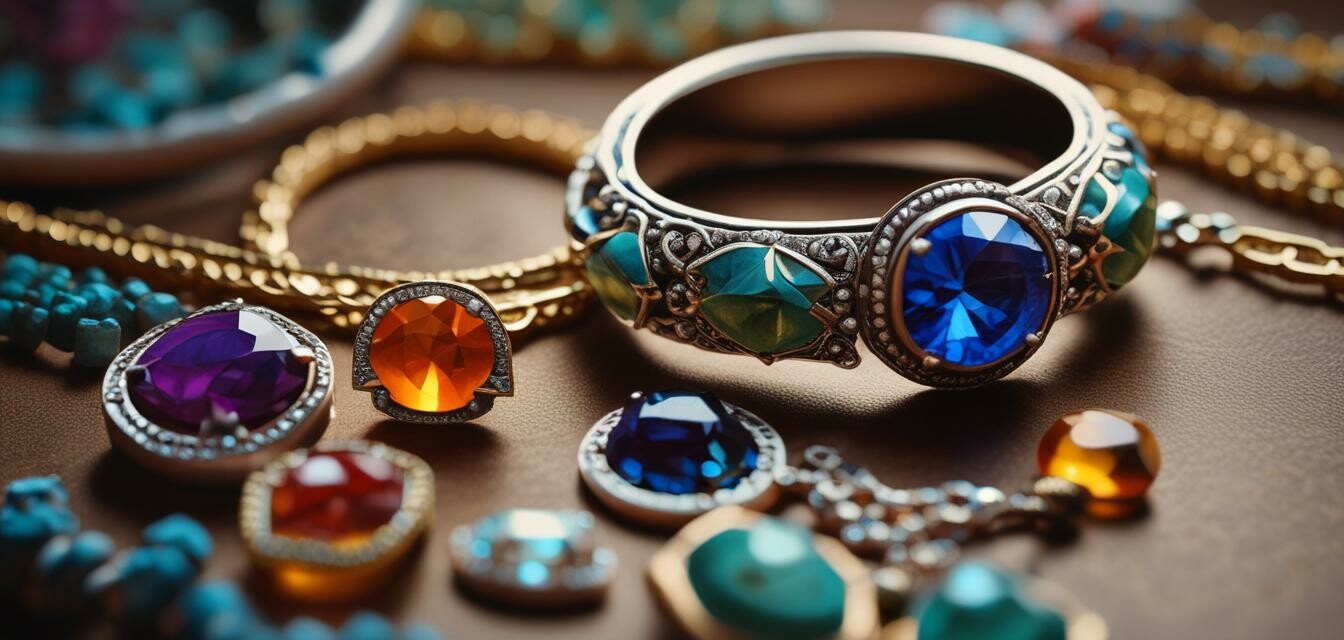
Regional influences on ethical jewelry trends
Key Takeaways
- Cultural aspects significantly shape ethical jewelry designs.
- Regional resources affect the availability and styles of gemstone jewelry.
- Artisan techniques vary by location, resulting in unique craftsmanship.
- Sustainability practices differ across regions based on local traditions.
- Understanding global influences can guide ethical purchasing decisions.
In the vibrant world of ethical jewelry, regional influences play a substantial role in dictating trends and styles. The cultural significance of materials, craftsmanship, and traditional practices all contribute to the evolution of ethical jewelry. Whether it’s the vibrant colors of gemstones from South America or the intricate designs rooted in African history, each region has something unique to offer. In this article, we will explore how different regions impact trends in ethical jewelry, highlighting the cultural aspects at play.
The cultural tapestry of ethical jewelry
Jewelry serves not just as adornment but also as a representation of cultural identity. Many artisans draw upon their heritage to create pieces that tell a story. Let’s delve into how various regions are influencing ethical jewelry trends based on their unique cultural aspects:
1. South America: A burst of color and vibrancy
South America is renowned for its rich mineral resources and vibrant culture. In countries like Brazil and Colombia, gemstones such as emeralds and amethysts are abundant. Artisans celebrate their heritage through the use of colors and patterns that reflect local art forms.
2. Africa: Tradition meets contemporary style
In Africa, traditional craftsmanship is blended with modern aesthetics. For example, the Maasai tribe is known for its beaded jewelry, which has become increasingly popular worldwide. Using sustainable materials and techniques, these artisans ensure that their work honors their traditions while appealing to modern consumers.
3. Asia: Spiritual connections and symbolism
Asian cultures often incorporate spirituality and symbolism into their jewelry. From the intricate designs of Indian gold jewelry to the minimalist aesthetic of Japanese styles, the regional preferences are diverse. Ethical sourcing from these regions also reflects a commitment to environmental sustainability, often utilizing recycled materials.
4. Europe: The blend of history and innovation
European artisans are known for their rich history in jewelry-making. Cities like Florence and Paris are celebrated for their workshops that marry historic methods with contemporary design. The emphasis on ethical sourcing and sustainability is reshaping what luxury means in the ethical jewelry market.
Table of regional influences on ethical jewelry trends
| Region | Cultural Influence | Popular Materials | Distinctive Techniques |
|---|---|---|---|
| South America | Colorful patterns, traditional motifs | Emeralds, amethysts | Hand-carving, weaving |
| Africa | Beadwork, craftsmanship heritage | Recycled materials, natural fibers | MAasai beading techniques, metalwork |
| Asia | Spiritual symbolism, minimalist design | Silver, jade | Filigree, engraving |
| Europe | Historical significance, luxury aesthetics | Gold, diamonds | Traditional casting methods, contemporary design insertion |
Emerging trends within regions
As the ethical jewelry landscape evolves, several new trends are emerging within various regions:
- Increased use of sustainable materials, particularly recycled metals and ethically sourced stones.
- Minimalist designs that reflect a broader cultural shift towards simplicity and sustainability.
- The rise of collaboration between artisans across different regions, creating unique fusion designs.
- Incorporation of technology in jewelry design, showcasing innovative craftsmanship.
The role of ethical certifications
As consumers become more informed about their purchasing choices, ethical certifications have gained prominence. Understanding what these certifications mean can help consumers make responsible choices. Here are some important certifications to look for:
| Certification | Description | Example Organizations |
|---|---|---|
| Fair Trade | Ensures fair wages and conditions for artisans | Fair Trade International |
| Responsible Jewellery Council (RJC) | Focuses on ethical sourcing and supply chain transparency | RJC |
| Conflict-Free | Guarantees no conflict minerals are used | Various gemstone suppliers |
Conclusion
Understanding the regional influences on ethical jewelry trends can enrich your knowledge as a consumer. Each piece of jewelry comes with a narrative of cultural significance and sustainable practice. By supporting ethical jewelry, you're not just buying adornments, but also empowering artisans and embracing sustainability. Explore the beautiful world of ethical stone earrings and discover the unique stories each piece has to tell.
Join the movement towards responsible jewelry purchasing
As global awareness of sustainable practices continues to grow, the demand for ethical jewelry will only increase. By opting for pieces that reflect both cultural aesthetics and sustainable practices, you contribute positively to artisans' communities worldwide. Explore more in our sustainability practices section and stay updated with the latest news and trends in ethical gemstone jewelry.